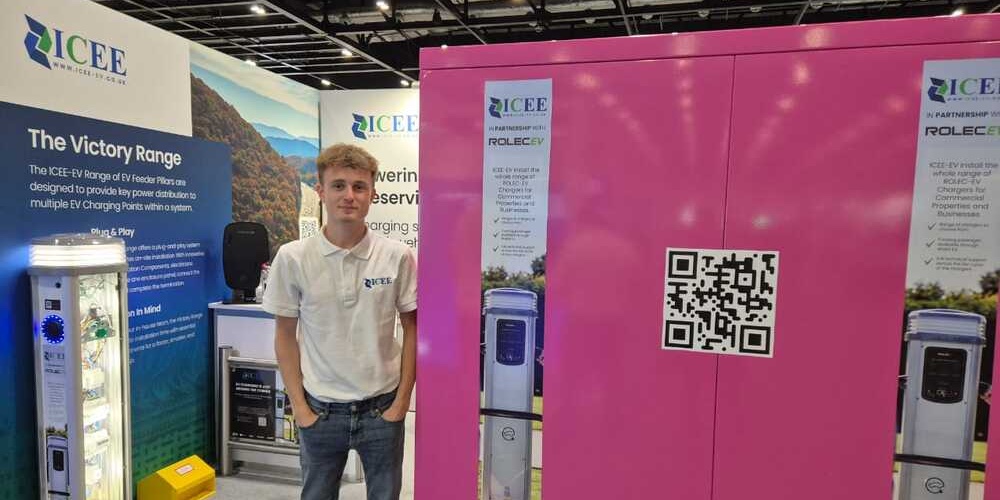One of the main challenges of electric mobility, which is mirrored across most European countries, is the bureaucratic process involved in the installation of chargers and the scarcity of energy supply.
To address this issue, ICEE-EV designs and manufactures power pillars capable of supplying energy to up to 22 charging devices from a single cabinet.
“We have implemented a plug-and-play system, which significantly reduces on-site labour,” explains Ryley Arnold, Marketing Team Lead, to Mobility Portal Europe during the London EV Show.
How does it work?
“Instead of requiring an electrician to carry out extensive on-site work, they only need to connect the charging cable directly to the terminal’s connection blocks, test the system, and the equipment is ready to operate,” he elaborates.

This approach not only simplifies installation but also reduces costs and operational time, making it ideal for large-scale projects.
The company offers three options in different sizes, specifically 200, 400, and 600.
According to Arnold, this solution is perfectly suited to meeting one of the primary demands of electric vehicle drivers: fast charging.
“Most users do not want to spend three hours waiting for their car to charge; they want something faster and better,” he asserts.
He further explains:
“That’s why we need to consider the energy infrastructure, identify which chargers we are installing, how we can accelerate this process with DC devices, what the best approach is, and how to manage the equipment efficiently.”
And not only that.
Arnold also emphasises the importance of charger owners having access to information such as the amount of energy being used, the charging costs, and other key aspects.
“All this data will be crucial as we advance in terms of sustainability and cost efficiency in the future,” he highlights.
What challenges are identified in the United Kingdom?
Arnold points out that one of the main challenges in the UK is the lack of a sufficiently robust charging network to meet growing demand.
“It is crucial for the Government to provide more funding so that companies can undertake large-scale infrastructure projects,” he comments.
This perspective underscores the need for public-private partnerships and governmental incentives to accelerate the transition to electric mobility.
He also mentions the urgency of fostering greater innovation.
More about ICEE-EV and their presence at the London EV Show
Originally focused on telecommunications and manufacturing, the company has recently diversified into the electric sector.
Based in Waterlooville, England, ICEE-EV combines the design, manufacturing, and installation of electrical cabinets and charging points, offering an end-to-end service that includes planning, installation, and maintenance.
The company collaborates with a variety of partners to install charging equipment across the UK.
“We have recently undertaken numerous projects in caravan parks and holiday resorts, installing a wide range of chargers,” Arnold details.
At the London EV Show, ICEE-EV showcased its range of solutions with the aim of connecting with potential clients and industry stakeholders.
“Our line of power pillars is relatively new, and we are here to connect with prospective customers and industry players to explore what they can offer us and what we can offer them,” Arnold remarks.
Success stories
The firm works with strategic partners such as National Highways and Transport For Scotland to develop infrastructure in commercial and residential spaces.
“In terms of installations, we focus on housing developments, industrial parks, and residential areas,” Arnold indicates.
For Transport For Scotland, ICEE-EV completed a series of charger installations at service stations.
“We handled the entire system: we planned it, conducted the site survey, installed the chargers, and provided ongoing maintenance. Everything was managed internally by our project team,” he elaborates.
The company has also delivered other successful projects, including the recent deployment of charging equipment at seven caravan sites in West Dorset.
“In this way, we provide holidaymakers with the convenience of not having to worry about where to charge their vehicles—they simply plug in and carry on with their day,” he states.
ICEE-EV also has partnerships with companies such as Wattif EV and Rolec.








